Application and Evaluation of Face Detection
Aim
The aim of this project was to develop a system that can detect the
presence and the position of human faces in greyscale images and to
evaluate its performance.
Platform
The system was implemented in Matlab, using a Face Detection
Toolbox, implemented in University of Alberta, California, US in
Microsoft Windows Environment.
System Description
A set of face and non-face images was used to train the system.
Principal Component Analysis (PCA) is used to reduce dimensionality of
data. The K-Nearest Neighbour (K-NN) method is used to classify pixels
to face and non-face categories. An overview of the system is given
below:
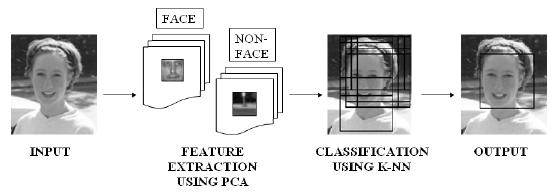
Evaluation
To evaluate the system, its output (black box on the figure below) was
compared with Ground Truth (GT). Ground Truth for each test image was
specified manually (green box on the figure below).
According to the comparison, each pixel on the image was characterised
as
- TP: True Positive
- FP: False Positive
- TN: True Negative
- FN: False Negative
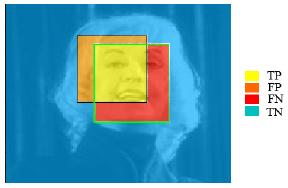
The performance of the system was characterised by measure that is
estimated by the following formula. This formula takes into account the
number of pixels classified into TP, FP and FN.

Results
Ten greyscale images were used to test the system. For each image, the
output of the algorithm (black box) was compared to the GT provided by
a human observer (green box):
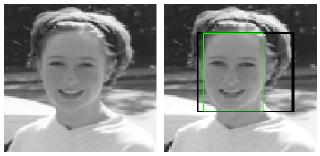
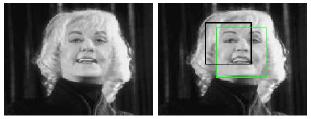
The graph below summarises the results of the system evaluation:
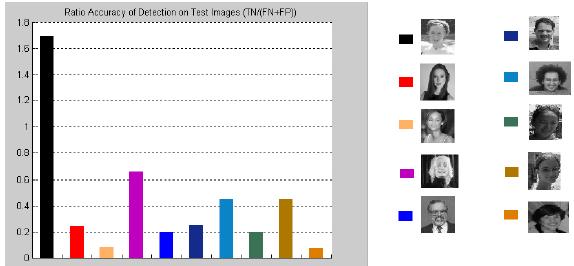
Conclusions
The performance of the system has many constraints, therefore future
work should consider a scale invariant version of the algorithm or more
sophisticated algorithms. The proposed evaluation technique is valuable
because it can allow the comparison of different algorithms and
therefore assists the process of improving the system.
About this work
The above system was implemented by Theresa Apolinario for his final
year
project at Kingston University, under the supervision of
Dimitrios Makris,
during the academic year 2005-2006.
